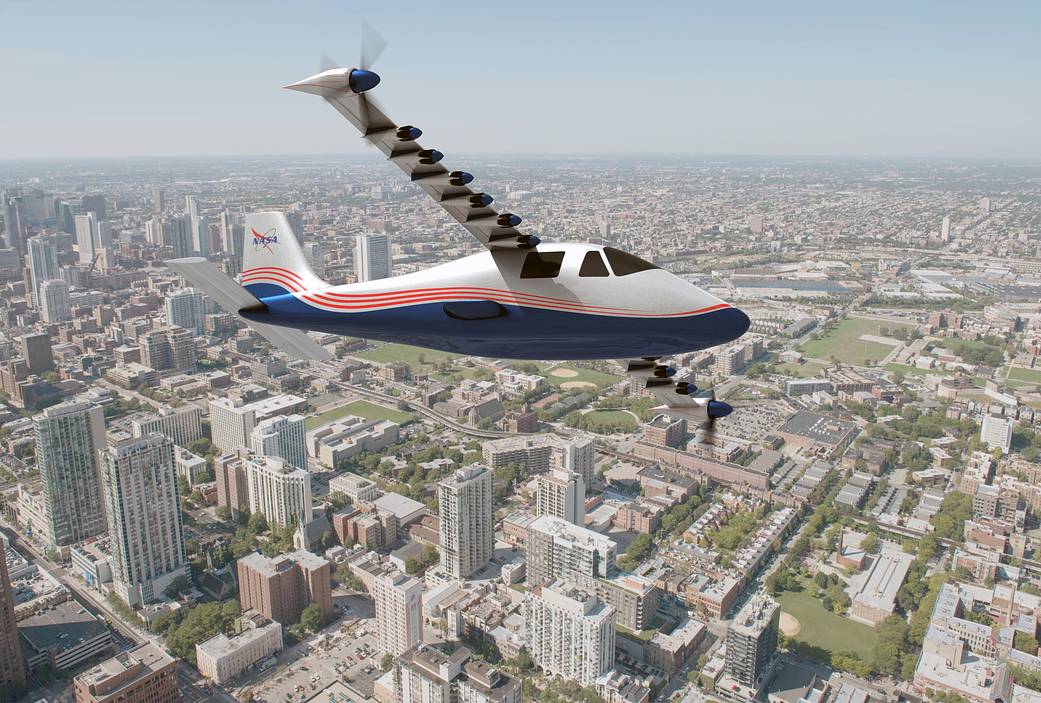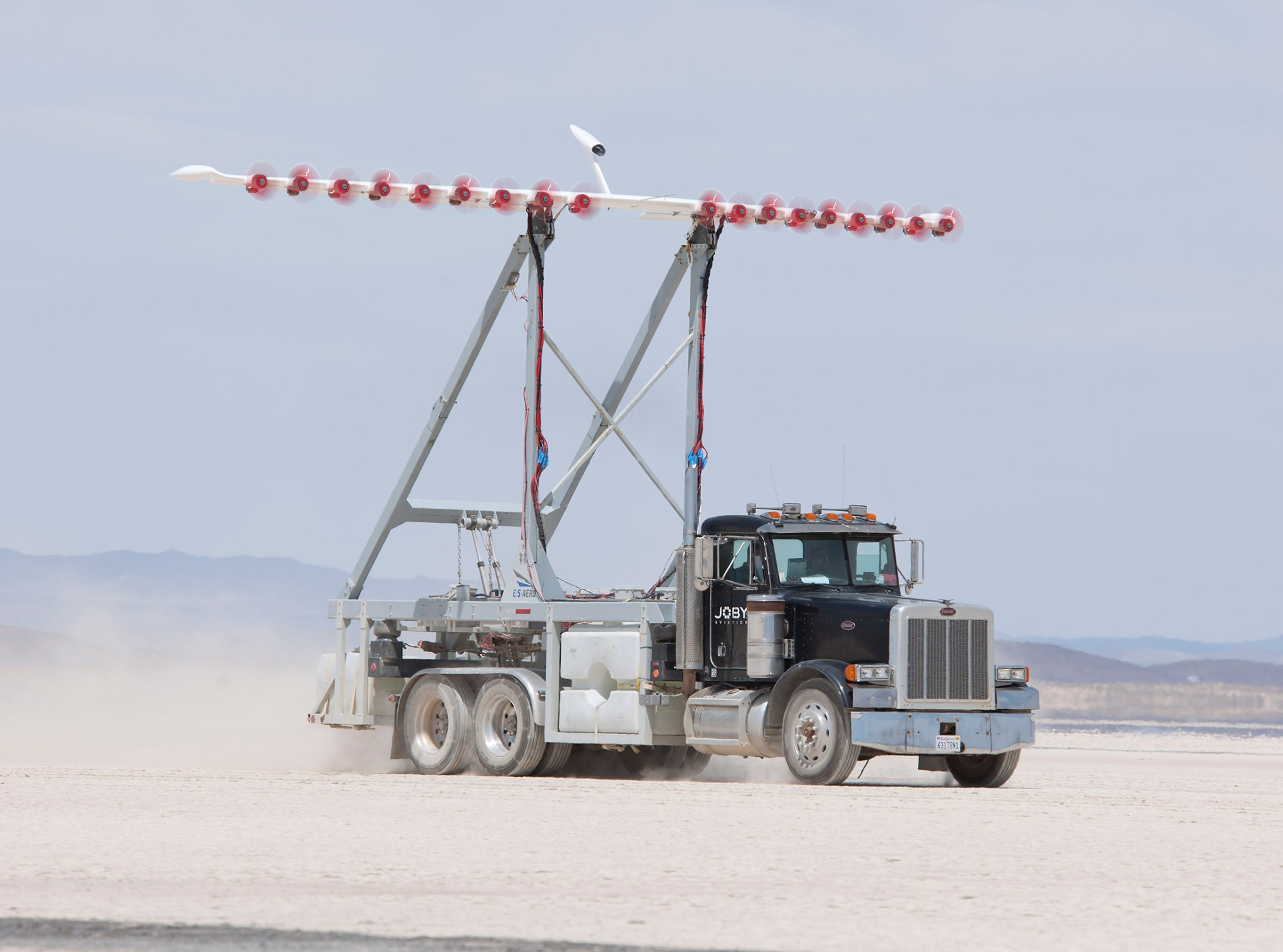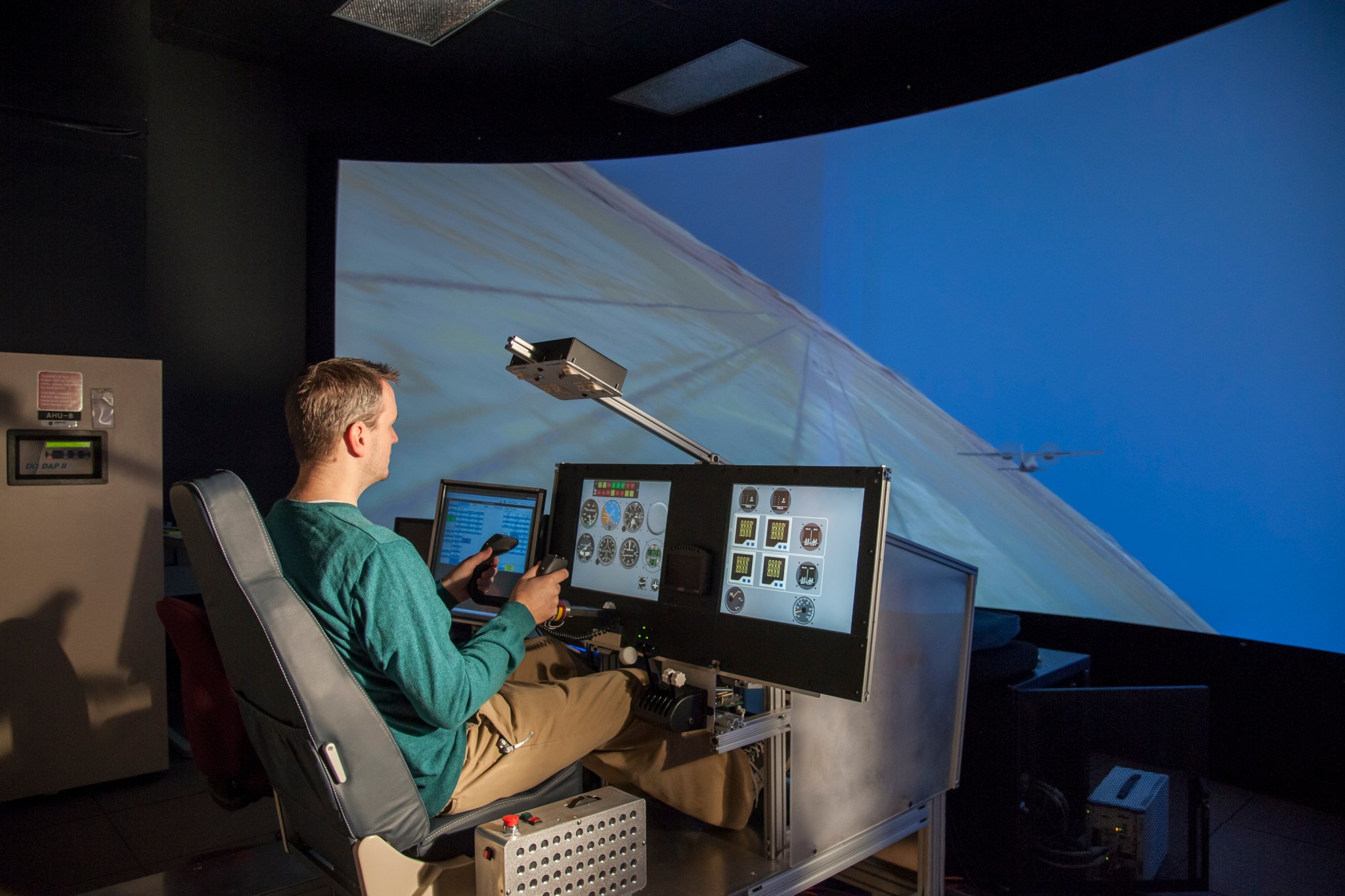NASA’s X-57 “Maxwell” is the agency’s first all-electric experimental aircraft, or X-plane, and is NASA’s first crewed X-plane in two decades. The primary goal of the X-57 project is to share the aircraft’s electric-propulsion-focused design and airworthiness process with regulators, which will advance certification approaches for distributed electric propulsion in emerging electric aircraft markets.
The X-57 will undergo as many as three configurations as an electric aircraft, with the final configuration to feature 14 electric motors and propellers (12 high-lift motors along the leading edge of the wing and two large wingtip cruise motors).
The X-57 team is using a “design driver” as a technical challenge, to drive lessons learned, as well as best practices. This design driver includes a 500 percent increase in high-speed cruise efficiency, zero in-flight carbon emissions, and flight that is much quieter for the community on the ground.
Converting Existing Aircraft
The X-plane is being built by modifying a baseline Italian Tecnam P2006T to be powered by an electric propulsion system. The advantage of using an existing general aviation aircraft design is that data from the baseline model, powered by traditional combustion engines, can be compared to data produced by the same model powered by electric propulsion.
The project is being executed through four phases, referred to as “modifications”, of testing.
The X-57 Maxwell project includes four configurations and stages of research, called modifications.
Modification I
The first phase of investigating the potential for electric propulsion included defining the requirements of the research, along with systems analysis, design, and a number of tests, both in the air and on the ground.
LEAPTech
One of the earliest evaluations during the Modification I phase included ground validation of the distributed electric propulsion high-lift system, in 2015. The Leading Edge Asynchronous Propeller Technology testing, or LEAPTech, performed this validation on the Rogers Dry Lakebed at Edwards Air Force Base in California. The project was a collaboration between NASA and California companies Empirical Systems Aerospace of San Luis Obispo, and Joby Aviation of Santa Cruz.
An experimental electric wing, named the Hybrid Electric Integrated Systems Testbed, or HEIST, was hoisted atop a heavily modified big rig, which drove at speeds close to 80 mph to simulate the effects of a wind tunnel. The wing was outfitted with 18 electric motors and propellers, which ran simultaneously during the lakebed runs.
The tests showed that the motors produced a total of 300 horsepower. It validated that the airflow from the distributed 18 motors generated more than double the lift of the unblown wing.
Tecnam Data Collection
In 2015, NASA pilots and engineers also performed test flights of a production-instrumented Tecnam P2006T in the skies above and around Edwards Air Force Base. The purpose of the flights was to collect data, such as lift, drag, cruise efficiency, energy usage and ride quality.
The X-57 is a P2006T integrated with an electric propulsion system, which will be flown to gather data from similar flights. The two sets of data will be analyzed and compared, helping NASA’s X-57 team to meet its design driver of validating the ability of distributed electric propulsion to improve efficiency.
Modification II
The project’s second phase includes several milestones for X-57. In addition to continued systems testing and validation, Mod II marked the beginning of physical integration of X-57 itself into its earliest stage as an electric aircraft.
Battery Redesign and Validation
As an all-electric experimental aircraft, X-57 will be powered through the use of lithium ion battery systems. In order to implement these systems as safely as possible, NASA first had to validate that the batteries could safely power an entire flight profile, and demonstrate the system’s ability to isolate any rapid temperature increase to prevent it from spreading, and escalating into a fire – an event known as a “thermal runaway”.
NASA engineers achieved this milestone following a system redesign in 2017, allowing the batteries to be fabricated, and ensuring a safe environment for the test program. The successful battery redesign was shared publicly, providing an immediate benefit to the industry as a result of the research.
Simulator
Pilots and engineers developed and began flying an X-57 simulator at NASA’s Armstrong Flight Research Center in California, designed to feature the specifications of the electric propulsion system. The interactive simulator began preparing pilots for X-57’s future flight-testing phase.
Flight control engineers and technicians at NASA Armstrong developed the simulator to provide a virtual flight experience based on what the X-plane itself will actually feel like when it’s in the air. The system helps familiarize pilots with the system and makes them more adept with reaction times and maneuvers.
Airvolt
Before an experimental electric system could be integrated into an aircraft, it had to first be tested and validated. A 13.5-foot tall test stand helped NASA researchers better understand the intricacies of electric motor systems, and provided validation for the thrust of the electric motors. In addition to helping engineers anticipate system integration challenges, the stand helped to verify the components of electric propulsion.
As early-stage technology is further evaluated, confidence in its use for future systems is established. Managing the differences between traditional aircraft propulsion and distributed electric propulsion is made easier by finding methods of managing those differences.
Electric Retrofit and Testing
The Modification II version of the X-57 looks similar to the baseline 2006T, except the two traditional inboard combustion engines are replaced by two inboard electric motors, essentially turning the aircraft’s propulsion system electric.
Ground taxi tests at NASA Armstrong help to examine and validate the safety and functionality of the electric system, while flight tests will seek to validate the X-57’s electric motors, battery, and instrumentation.
Modification III
Work on the third phase of the project began in tandem with Modification II, with the goal of taking the X-57 to a new level of experimental electric-powered flight.
High-Aspect Ratio Experimental Wing
Perhaps the most noticeable difference from the X-57’s Modification II configuration is the development and integration of an experimental, high-aspect ratio wing. Designed by Xperimental of San Luis Obispo, California, the wing features a large reduction in area, with wing loading increasing from 17 pounds per square foot to 45 pounds per square foot.
The reduction in wing area also contributes to more efficient cruise flight through decreasing friction drag. The final Modification IV effort will demonstrate that the high aspect ratio wing with the integrated high lift motor system will allow the X-57 to take off and land at the same speed as the baseline P2006T. The aircraft will also be less sensitive to gusts and turbulence, leading to a smoother flight.
Relocation of Cruise Motors
One of the most critical, and noticeable, elements of the high aspect ratio wing is the relocation of the large cruise motors to the wing tips. The replacement of 100-horsepower Rotax 912S engines with 60-kilowatt motors, developed by Joby Aviation, reduce the weight of each motor and propeller from approximately 125 pounds to about 57 pounds.
The much lighter-weight electric motors allow for their relocation outboard. By moving the cruise motors from their Mod II inboard position to the wingtips for Mod III, the cruise motors recover energy that would otherwise be lost in the wingtip vortices.
Nacelles, which are outer casings that can generally act as housing for an aircraft’s engine, are also installed along the leading edge of the wing where 12 high-lift motors will eventually be positioned.
Modification IV
The final configuration of the X-57 presents the X-plane in its full, experimental configuration.
12 Leading Edge High-Lift Motors
The X-57, in its final form of the project, features 12 high-lift motors along the leading edge of the distributed electric propulsion wing. Similar to the 18 small motors used during LEAPTech ground tests, the high-lift motors are electrically powered to generate enough lift for X-57 to be able to take off at standard Tecnam P2006T speeds, even with the high aspect ratio experimental wing.
The high-lift motors and propellers are designed to activate, along with the wingtip cruise motors, to get the X-plane airborne. When the plane levels out for cruise mode, the high-lift motors will then deactivate, and the five propeller blades for each motor will then stop rotating, and will fold into the nacelles, so that they don’t create unwanted drag during cruise. The two wingtip cruise motors will maintain flight during this phase of the flight.
When the time comes to land, the motors will then reactivate, and centrifugal force will cause the propeller blades to unfold and create the appropriate lift for approach and landing.
Environmentally Friendly Aviation
The design driver for X-57 will also seek to reach the goal of zero carbon emissions in flight, which would surpass the 2035 N+3 efficiency goals. Electric propulsion provides not only a five-to-ten times reduction in greenhouse gas emissions, but it also provides a technology path for aircraft to eliminate 100 Low Lead AvGas, which is the leading contributor to current lead environmental emissions.
Additionally, since the X-57 will be battery-powered, it can run off renewable based electricity, making clear the environmental and economic advantages.
Specifications
(Based on Mod IV configuration)
Goal: Help develop certification standards for emerging electric aircraft markets.
Design Driver: 500% increase in high-speed cruise efficiency, zero in-flight carbon emissions, and flight that is much quieter for the community on the ground.
Objectives are to:
- Mod II: Demonstrate 3.3-times lower energy use at high speed compared to original P2006T.
- Mod III: Demonstrate 1.5-times lower energy use at high speed compared to Mod II.
Aircraft Weight: Approximately 3,000 pounds.
Maximum Operational Altitude: 14,000 feet.
Cruise Speed: 172 mph (at 8,000 feet)
Critical Takeoff Speed: 58 knots (67 mph).
Batteries:
- Lithium Ion.
- 860 pounds.
- 69.1 kilowatt hours (47 kilowatt hours usable)
Cruise Motors and Propellers (2):
- 60 kilowatts.
- Air-cooled.
- 5-foot diameter propeller.
- Out-runner, 14-inch diameter.
- 117 pounds each, combined weight.
High-Lift Motors and Propellers (12):
- 5-blade, folding propeller.
- 10.5 kilowatts.
- Air-cooled.
- 1.9 foot diameter propeller.
- 15 pounds each, combined weight.

































